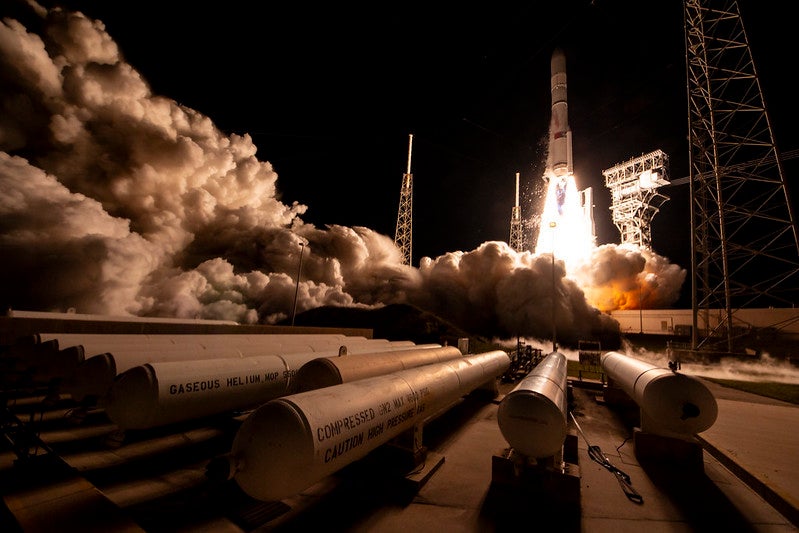Latest News

Vulcan Centaur, the next-generation heavy-lift rocket from United Launch Alliance, made its debut early Monday morning. It was a successful first launch for the long-awaited rocket — but the customer spacecraft from Astrobotic experienced a propulsion failure after deployment.
The Vulcan mission took off on Jan. 8 at 2:18 a.m. EST from Space Launch Complex-41 at Cape Canaveral Space Force Station. The rocket uses liquefied natural gas (LNG) / methane fueled booster powered by a pair of BE-4 engines provided by Blue Origin, and two graphite epoxy motor (GEM) 63XL solid rocket boosters provided by Northrop Grumman.
“Vulcan’s inaugural launch ushers in a new, innovative capability to meet the ever-growing requirements of space launch,” said Tory Bruno, ULA’s president and CEO. “Vulcan will provide high performance and affordability while continuing to deliver our superior reliability and orbital precision for all our customers across the national security, civil and commercial markets. Vulcan continues the legacy of Atlas as the world’s only high-energy architecture rocket.”
The primary customer was Astrobotic’s Peregrine lunar lander, carrying 21 payloads from governments, companies, universities, and NASA’s Commercial Lunar Payload Services (CLPS) program. After the launch, Astrobotic reported there was a “failure within the propulsion system causing a critical loss of propellant.”
Astrobotic initially successfully received telemetry and its command, data, and propulsion systems powered on as expected. Unfortunately, there was an anomaly which Astrobotic said prevented the spacecraft from achieving a stable sun-pointing orientation. The company said it is trying to stabilize the loss and maximize the data it can capture, including alternative mission profiles.
For ULA, this mission served as the first of two certification flights required for the U.S. Space Force’s certification process. The second certification mission (Cert-2) is planned to launch in the coming months for Sierra Space’s Dream Chaser, and ULA plans to launch a national security mission by summer.
The Vulcan rocket has a backlog of about 70 launches, a mix of government and commercial missions valued in the “billions” of dollars, Bruno recently said. This backlog includes 38 launches for Amazon’s Kuiper constellation and National Security Space Launch (NSSL) missions as well.
Monday morning’s launch took place after a series of delays. When the rocket was introduced in 2015, it was expected to enter service in 2019. The rocket was also set to enter service in May 2023, but the Centaur V upper stage exploded during qualification testing in March 2023, grounding the launch campaign while ULA worked on a fix. Routine issues during the wet dress rehearsal for this launch campaign caused the mission to slip to 2024.
“With the success of ULA’s Vulcan rocket, our country has more tools to explore space. Spaceflight is a daring adventure, and Astrobotic is making progress for CLPS deliveries and Artemis. NASA will continue to expand our reach in the cosmos with our commercial partners,” NASA Administrator Bill Nelson said in a statement on the launch.
Get the latest Via Satellite news!
Subscribe Now